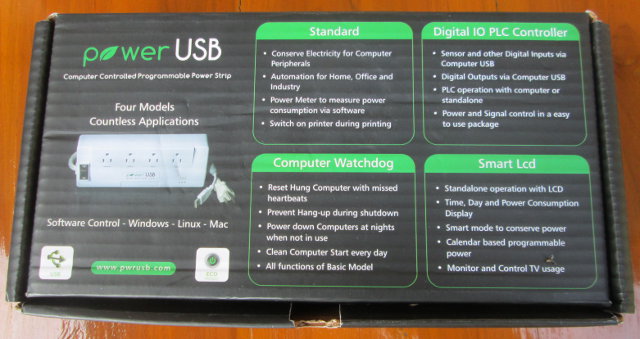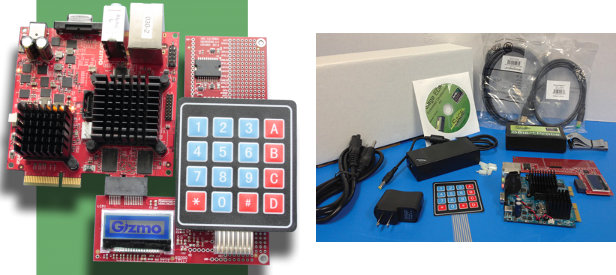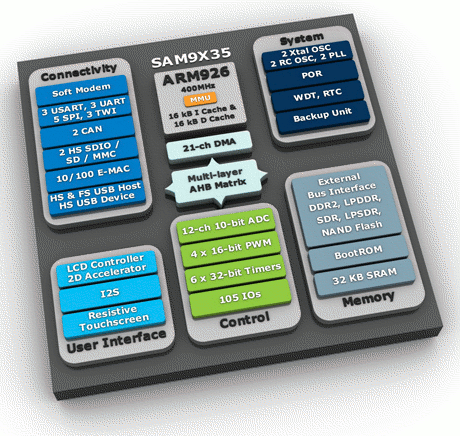PowerUSB power strips are four outlets power strips designed to help users save power by better understanding their devices power consumption, and automatizing tasks such as power on/off using timers, printer on/off controls, and more. One outlet is always on (for the main computer) and the 3 remaining outlets can be controlled via USB and the control software installed in a Linux, Mac or Windows x86 machine. The three of the four outlets are controlled through the software. Those power strips should allow lower electricity bills, and cover the cost of the strips ($69 to $129) within a few months. There are 4 models: PowerUSB Basic – $69.99 – The simplest model. You can control the 3 programmable outlets with on/off timers and keyboard shortcuts. PowerUSB Digital IO – $109.99 – This version adds 5 digital input/output lines for instrumentation and automation. The current model has 3 inputs and 2 […]
Digia and the Qt Project Release Qt 5.0
The Qt Project and Digia have announced the release of Qt 5.0, which is available via Qt 5.0 page on qt-project.org, or via qt.digia.com/qt5 for commercial customers. Qt 5.0 comes as a full SDK package including Qt 5 framework, Qt Creator 2.6.1, examples and full documentation. Qt 5.0 is available in source code and binary format for Linux (64 and 32 bit), Mac OS X (10.7 and 10.8), and Windows. You can read more about the main changes and new features compared to Qt 4.8, on my previous blog post about Qt 5 Alpha. A video showcasing some of the key features of Qt 5 has been uploaded to Youtube. The video above is actually a screen capture of a Qt 5 based application using Qt Quick, OpenGL and WebKit, running in a Mac. Audio has been added with iMovie application. You can try this Qt 5 Launch Demo by yourself by […]
$199 GIZMO EXPLORER KIT – Embedded Development Kit Based on AMD G-Series G-T40E APU
I’ve just stumbled upon a low cost and open source embedded development kit featuring AMD G-Series G-T40E dual core APU that comes with the following: The Gizmo Board – A compact (10×10 cm) development board for powered by an AMD G-Series APU. The Explorer Board – An expansion I/O board providing an alpha-numeric keypad, a micro-display, and a breadboard area for prototyping and customization. Sage SmartProbe JTAG Development Tool – The kit includes the SmartProbe hardware and 20 hours of trial time use. Ethernet & USB Cables – The USB cable lets you connect the SmartProbe to your PC. The Ethernet cable is for networking connectivity, which can be used to access the SmartProbe as well. USB wall charger Power Supplyand Cable – A universal power supply for the Gizmo board, with a U.S.-standard cord. 6x standoffs with nuts Alpha-numeric keypad – To connect to the explorer board Installation DVD […]
5 New Atmel SAM9 Processors: SAM9G15, SAM9G25, SAM9G35, SAM9X25, and SAM9X35
Atmel recently announced five new embedded processors for its SAM9 family all running at 400MHz, featuring 100mW consumption, support for DDR2 and NAND flash memory, with some models offering LCD touchscreen support and CAN interfaces: SAM9G15 based on ARM926EJ Embedded Microprocessor Unit with LCD, Touchscreen, HS USB and LPDDR/DDR2/MLC NAND support. SAM9G25 based on ARM926EJ Embedded Microprocessor Unit with Ethernet, HS USB and LPDDR/DDR2/MLC NAND support. SAM9G35 based on ARM926EJ Embedded Microprocessor Unit with LCD, Touchscreen, Ethernet, HS USB and LPDDR/DDR2/MLC NAND support. SAM9X25 based on ARM926EJ Embedded Microprocessor Unit with Dual Ethernet, Dual CAN, HS USB and LPDDR/DDR2/MLC NAND support. SAM9X35 based on ARM926EJ Embedded Microprocessor Unit with LCD, Touchscreen, Ethernet, Dual CAN, HS USB and LPDDR/DDR2/MLC NAND support. The 3 new SAM9G processors are basically a lower cost version of the SAM9G45 with less cache, no video decoding support, etc… The 2 SAM9X processors are similar but feature […]
The Next Version Microsoft Windows Will Support Embedded Systems based on Intel and ARM
Microsoft announced its new Windows operating system will support SoC based on ARM and is mainly working with NVidia (Tegra Processors), Qualcomm and Texas Instruments. This should allow their customers to provide a wider range of tablets running Windows OS. They will also keep working with AMD and Intel on their low power x86 processors. Here’s an excerpt of the press release: LAS VEGAS — Jan. 5, 2011 — Microsoft Corp. today announced at 2011 International CES that the next version of Windows will support System on a Chip (SoC) architectures, including ARM-based systems from partners NVIDIA Corp., Qualcomm Inc. and Texas Instruments Inc. On the x86 architecture, Intel Corporation and AMD continue their work on low-power SoC designs that fully support Windows, including support for native x86 applications. SoC architectures will fuel significant innovation across the hardware spectrum when coupled with the depth and breadth of the Windows platform. […]







